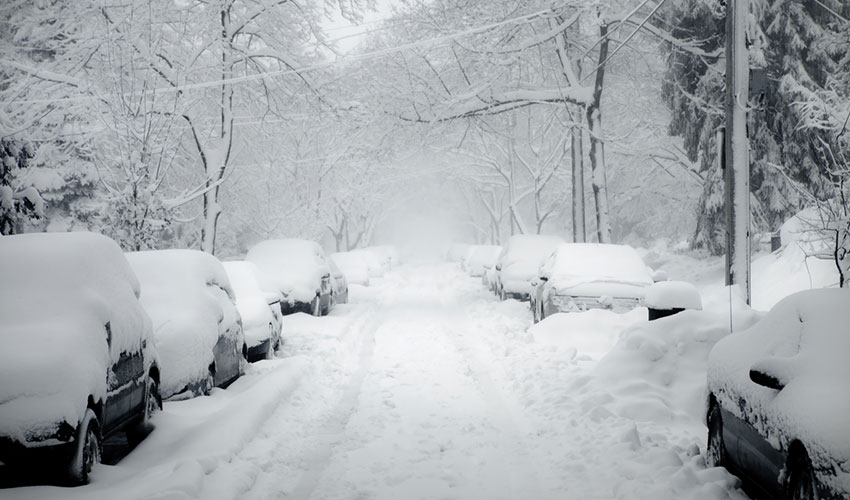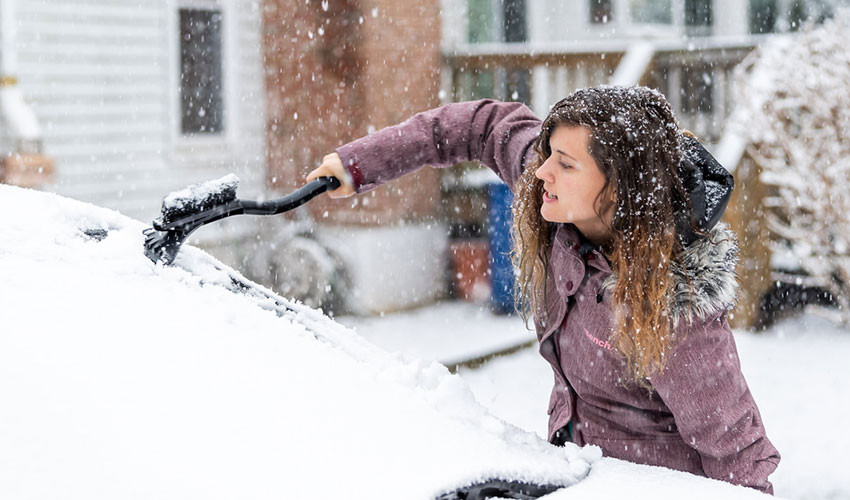How to drive in the snow without needing a tow

According to the Federal Highway Administration, over 70% of the U.S. population, and 70% of the nation’s roads, are located in snowy regions of the country. Though it’s a good idea to simply avoid the roads during winter weather, you may need to drive in the snow at some point. Below are a few tips to make sure your trip is a safe one.
Be prepared
If you’re leaving on a long trip, check the weather forecast to make sure roads will still be open when you get there. Plan your route and allow plenty of time to get there.
Get your vehicle ready
Fill the gas and wiper fluid tanks to full, make sure the tires are properly inflated, and your car has been tuned up and is running smoothly before you leave. When temperatures drop, so does battery power, so make sure your battery has sufficient voltage, amperage, and reserve capacity, or replace it before you go. Consider installing heavy-duty winter windshield wipers and using winter-specific washer fluid.
Practice driving in the snow
If you’re not used to driving in the snow, take your car to an empty parking lot to see how it performs in slippery conditions and practice making stops and turns. That will help you familiarize yourself with how the antilock brakes and electronic stability control will work, and what you need to do to keep the vehicle under control.
Stock up
Pack extra blankets, coats, boots, food, water, a flashlight, snow shovel, ice scraper and brush, and jumper cables in your vehicle, along with sand or kitty litter (to help with tire traction), in case your car gets stuck in the snow. And make sure to bring your cell phone and car charger.
Drive slower than usual
While driving too slowly can also cause accidents, it’s harder to control and stop vehicles when the road is slick or covered in snow. Increase the distance between you and the car in front of you and allow plenty of time to stop. Even consider using your hazards to let other cars know that you’re there and driving slower than the typical speed.
Know your car’s braking system
If you can avoid it, choose a route without a lot of traffic lights or places you’ll need to stop. But, if you need to stop, make sure you know the best way for your car. If your vehicle has antilock brakes, you’ll need to apply firm, continuous pressure on the brake pedal to stop the car. If you don’t have antilock brakes, pumping your breaks works well if you feel your wheels locking up.

Don’t power up (or stop) when going up hills
Gunning the gas when going up snowy hills just starts your wheels spinning faster, which can cause you to lose traction and slip. Applying the brakes when going uphill is also not advised, because you may have a hard time getting started again without slipping. Start accelerating before you reach the hill so you have enough momentum to reach the top. Keep your foot pressure light and even on the gas pedal, and if your wheels start to spin, slowly ease off.
Keep an eye on other drivers
While you may be a good snow driver, not everyone else is. Scan your mirrors and blind spots regularly to see how those around you are driving and avoid those who seem like they’re driving too fast, too slow, or erratically.
Make sure you’re covered
As always, make sure you have a good insurance policy that will cover you if you’re in an accident. Talk to your agent about your coverage today.
This document is advisory in nature and is offered as a resource to be used together with your professional insurance advisors in maintaining a loss prevention program. It is an overview only, and is not intended as a substitute for consultation with your insurance broker, or for legal, engineering or other professional advice.







